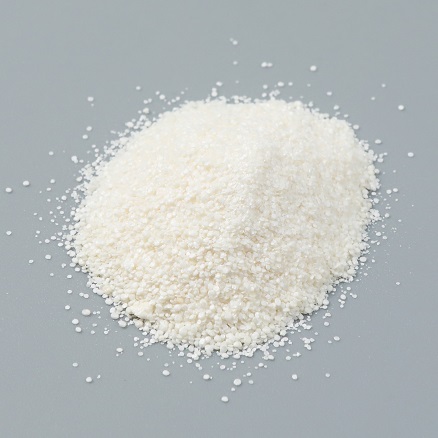DL-methionine is a synthetic form of the amino acid containing naturally occurring L-methionine and its mirror image isomer D-methionine.


DL-Methionine CAS#59-51-8
DL-methionine is a synthetic form of the amino acid containing naturally occurring L-methionine and its mirror image isomer D-methionine.
It is a white crystalline powder with a special odor of sulfur compounds and a slightly sweet taste. Easily soluble in water, dilute acid and dilute alkali, insoluble in ethanol, ether and other organic solvents. The pH value of 1% aqueous solution is 5.6 to 6.1. Stable to heat and air, unstable to strong acids.This product is a feed nutrient fortifier. Lack of methionine in livestock and poultry will cause stunting, weight loss, weakening of liver and kidney functions, muscle atrophy, and deterioration of fur. Adding 1kg of methionine to feed is equivalent to the nutritional value of 50kg of fishmeal. The general amount of methionine added to the feed is 0,05%-0.2%. It is suitable for the prevention and treatment of liver diseases and arsenic or benzene poisoning, etc. It can also be used for the treatment of dysentery and malnutrition caused by protein deficiency after chronic infectious diseases. Used as biochemical reagent.
Use 1: Used as a biochemical reagent.
Use two for the prevention and treatment of liver disease and arsenic or benzene poisoning, can also be used for the treatment of dysentery and chronic infectious diseases caused by protein deficiency and malnutrition.
Use three nutritional supplements. It has the same physiological effect as L-type methionine, but the price is low (L-type is made from DL-type), so DL-methionine is generally used. DL-Methionine is a restricted amino acid in plant foods such as oats, rye, rice, corn, wheat, peanut flour, soybeans, potatoes, and spinach. It is added to the above foods to improve amino acid balance. Requirements vary with cystine intake. Adult men need 1.1g/d. The taste of sea urchin is related to methionine, the sweet taste of sea urchin is related to glycine and alanine, the bitter taste is related to valine, and the fresh taste is related to glutamic acid, etc. Therefore, these amino acids can be formulated into flavoring agents. It is also used in amino acid infusion and comprehensive amino acid preparation. It can be used as flavor according to GB 2760-86.
Use four of this product is a feed nutrient enhancer. Lack of methionine in livestock and poultry will cause stunting, weight loss, weakening of liver and kidney function, muscle atrophy, fur deterioration and so on. Adding 1kg methionine in feed is equivalent to the nutritional value of 50kg fish meal. The general amount of methionine added in feed is 0,05%-0.2%.Use fiveThe content of commercial methionine is !]98.5%, it is one of the essential amino acids for the growth of livestock and poultry, it is the !0backbone!1 amino acid for the biosynthesis of proteins, it has a strong regulating effect on the metabolism of animals, and it is widely used in the fields of pharmaceuticals, foods, feeds, and cosmetics, etc. In pharmaceuticals, it can be used as an amino acid, and it is also used as an amino acid for the production of food.
In medicine, it can be used as the main ingredient of amino acid infusion and compound amino acid, and it can also be used to synthesize medicinal vitamins, and it can be used to produce liver-protecting preparations by using its anti-fatty liver effect; in food, it is used for amino acid fortification of food and processing of food and health care products, and it can be used as a nutritional supplement, and it can be used for fish cake products only because of its special smell; in feed industry, methionine has the largest dosage. In the feed industry, methionine is the most used, used as feed nutrient fortifier, to make up for the amino acid balance of feed additives, in the amino acid nutritional feed additives, methionine 60%, lysine accounted for 30%, other amino acids accounted for about 10%.
Our professional sales team are waiting for your consultation.